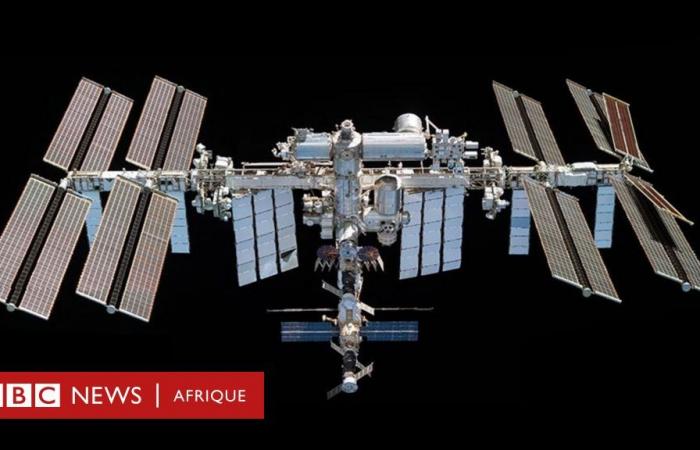- Author, Jonathan Amos
- Role, BBC Science Correspondent
-
9 minutes ago
Elon Musk’s SpaceX has been selected by NASA to dismantle the International Space Station at the end of its lifespan.
The California-based company will build a vehicle capable of pushing the 430-ton orbital platform into the Pacific Ocean early in the next decade.
The contract, worth $843 million, was announced Wednesday.
The first elements of the International Space Station were launched into space in 1998, and manned operations began in 2000.
The station orbits the Earth every 90 minutes at an altitude of just over 400 km and has been the scene of thousands of scientific experiments, covering topics as varied as the human aging process to the formula for new types of materials.
Engineers say the lab’s structure is still sound, but plans must be put in place for its eventual removal. Without any intervention, the platform would eventually fall to Earth on its own, posing a considerable risk to the planet’s population.
“Selecting a deorbit vehicle for the International Space Station will help NASA and its international partners ensure a safe and responsible transition to low-Earth orbit at the end of the station’s operations,” Ken Bowersox, the organization’s director of space operations, said in a statement.
The United States and Russia lead the ISS. Europe, Canada and Japan play supporting roles. Western countries have agreed to fund the station until 2030; Russia says its participation will last at least until 2028.
NASA has explored several options for disposing of the space platform at the end of its useful life, including disassembling the station and using its younger components in a next-generation platform. Another idea has been to simply hand it over to a commercial company to operate and maintain it.
But all these solutions involve a number of complications in terms of complexity and cost. Added to this is the legal problem of resolving ownership issues.
Neither NASA nor SpaceX have released details about the design of the “tug” that will carry the International Space Station out of orbit, but it will need considerable momentum to guide it safely through the atmosphere to the right place at the right time.
The platform’s large mass and size (it’s roughly the size of a football field) means that some structures and components will withstand the heat of atmospheric reentry and fall to the planet.
Controllers will let the ISS orbit naturally decay for a period of time, and once the last crew member has left orbit, they will send the tug to perform the final deorbit maneuver.
The space debris will head toward a remote location known as the Pacific Pole of Inaccessibility, or Point Nemo.
Named after the famous submarine sailor from Jules Verne’s “20,000 Leagues Under the Sea”, it lies more than 2,500 km from the nearest landmass.
NASA is confident that several private consortia will have begun launching commercial space stations by the time the International Space Station disappears from the sky.
The attention of space agencies will then turn to a project to build a platform called Gateway that will go into orbit around the moon.






